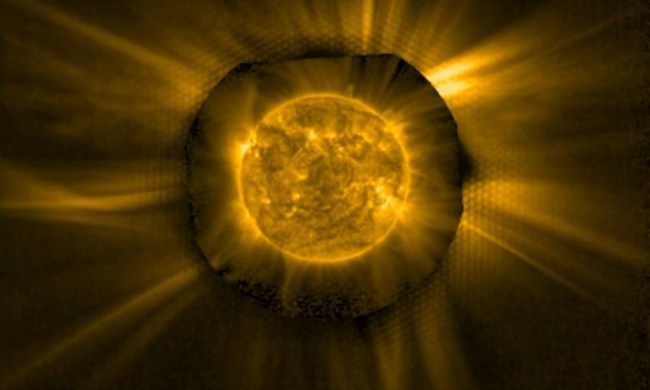The European Space Agency (ESA)’s Solar Orbiter spacecraft has made its first close approach to the sun, coming within 77 million kilometers (about 48 million miles) of the star’s surface.
The Solar Orbiter, launched in February, has reached its first perihelion this week, meaning the post in its orbit closest to the sun. By coming so close, at around half the distance between the sun and the Earth, the sun can be imaged closer up than ever before.
“We have never taken pictures of the sun from a closer distance than this,” ESA’s Solar Orbiter Project Scientist Daniel Müller said in a statement. “There have been higher resolution close-ups, e.g. taken by the four-meter Daniel K. Inouye Solar Telescope in Hawaii earlier this year. But from Earth, with the atmosphere between the telescope and the sun, you can only see a small part of the solar spectrum that you can see from space.”
The aim of the Solar Orbiter mission is to capture images of the sun’s poles, which have never been seen up close before. To do this, the spacecraft will use the gravity of Earth and Venus to swing into a highly angled orbit which will allow it to look down on the sun from above.

With the spacecraft now in its first perihelion position, over the next week, the researchers at ESA will test out the instruments on board, including six telescopes, to check that they can all work together in concert to image the sun. These instruments include special telescopes that are capable of imaging the sun itself. Other solar projects, such as the Parker Solar Probe, go closer to the sun but don’t have the instruments to image it directly.
“Our ultraviolet imaging telescopes have the same spatial resolution as those of NASA’s Solar Dynamic Observatory (SDO), which takes high-resolution images of the sun from an orbit close to Earth,” Müller said. “Because we are currently at half the distance to the sun, our images have twice SDO’s resolution during this perihelion.
“For the first time, we will be able to put together the images from all our telescopes and see how they take complementary data of the various parts of the sun including the surface, the outer atmosphere, or corona, and the wider heliosphere around it.”



